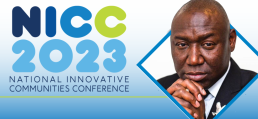Destigmatizing Mental Healthcare for our Young People
A Tactical Guide for Concerned Community Members
Based on the talk at the 2023 National Innovative Communities Conference by Dr. Evita Limon-Rocha
Mental health is a critical part of our overall health, and young people are especially susceptible to some of the more pernicious outcomes of mental health issues. Young people are at the mercy of their rapidly changing biologies during a tumultuous historical period in our country, and depending on their community and family situation, additional external stresses can come into play on their mental states.
Unfortunately, the mental health stigma in our country is a major barrier to getting help, especially for this vulnerable population. This article will discuss:
- The prevalence of mental health problems in young people
- The impact of stigma, and
- How we can work to destigmatize mental healthcare.
Prevalence of Mental Health Problems in Young People
The data is clear: mental health problems are on the rise among young people. In 2020, 4.1 million adolescents in the United States had at least one major depressive episode, and 14.8 million adults had at least one major depressive episode with severe impairment. Additionally, persistent feelings of sadness or hopelessness have increased 40% among high school students between 2009 and 2019.
These statistics are alarming, but they are not surprising. Young people are facing a number of challenges that can contribute to mental health problems, including bullying, social media pressure, academic stress, and family conflict.
Impact of Stigma
Mental health stigma is a major barrier to getting help. People who are struggling with mental health problems often feel ashamed or embarrassed, and they may be afraid of being judged or discriminated against. This can prevent them from seeking help, which can lead to much worse outcomes.
Stigma can also have a negative impact on the mental health of young people. Studies have shown that stigma can increase the risk of depression, anxiety, and suicidal thoughts. It can also make it more difficult for young people to cope with stress and challenges.
How We Can Destigmatize Mental Healthcare
There are a number of big-picture things that we can do to destigmatize mental healthcare. At the end of this post, we’ll suggest some tactical strategies and immediate actions we can all take to help anyone who might be struggling.
- First, we need to talk about mental health more openly. We need to challenge the stereotypes and misconceptions about mental illness. We also need to make sure that young people have access to accurate information about mental health.
- Second, we need to support mental health education in schools. This education should teach young people about the signs and symptoms of mental health problems, as well as how to get help.
- Third, we need to change the way that we talk about mental illness in the media. The media often portrays mental illness in a negative light, which can contribute to stigma. We need to demand more positive and accurate portrayals of mental illness in the media.
- Finally, we need to be role models for young people. If we want to destigmatize mental healthcare, we need to be open about our own mental health experiences. We need to show young people that it is okay to talk about mental health, and that it is okay to seek help.
Actionable Ideas for Destigmatizing Mental Health in Your Community
- Activate the power of connectedness: Feeling connected to school, peers, and adults can be protective against mental health problems, so working together to create places, groups, forums, and communities where people can come together to pursue common interests or goals can be helpful. This could be anything from a book club to a craft night at a local coffee shop. It could be an online forum to talk about a hobby or a school club that meets at lunch to work on a common goal.
- Model the importance of self-care: It is important to recognize signs of stress and burnout in ourselves and others, so that we can take care of ourselves and our communities. As parents, friends, and leaders, we can model this critical focus by talking about how we take care of ourselves. Discuss the ways you blow off stress with the young people in your life. Invite them to take a walk with you, or watch a movie. Talk about meditation or the way you sometimes just close your eyes and breathe, remembering what you feel gratitude for in your life.
- Create safe spaces: It is important to create safe spaces where people feel comfortable talking about their mental health. This could be a physical space, such as a therapist's office or a support group, or it could be a virtual space, such as an online forum or chat room.
- Ask open-ended questions: When talking about mental health, it is important to ask open-ended questions. This allows the person to share their thoughts and feelings without feeling judged. For example, instead of asking "Are you feeling depressed?" you might ask "How are you feeling today?"
- Address stigma openly: When people are afraid to talk about their mental health, they are less likely to seek help. This can lead to the development of more serious mental health problems. By addressing stigma, we can help people to get the help they need.
What to Do if Someone Close to You is Struggling
Understanding the issues our youth are facing and how they may be internalizing the stress and conflict from some of those issues is good. Talking about it is one step closer to removing stigma. If you believe someone close to you is struggling with their mental health, don’t assume they will figure it out. Offer to be the understanding ear they might need, and take action if necessary.
Understand the difference between anxiety and depression
Anxiety and depression are both common mental health problems, but they are different. Anxiety is characterized by excessive worry and fear, while depression is characterized by sadness, loss of interest, and changes in sleep and appetite. Educate yourself so that you can help the young people in your life recognize these common issues and assist them in finding help.
Signs and symptoms of anxiety and depression: Anxiety and depression can manifest in a variety of ways, but some common signs and symptoms include:
- Persistent sadness or hopelessness
- Changes in appetite or sleep
- Difficulty concentrating or making decisions
- Irritability or anger
- Fatigue or loss of energy
- Thoughts of death or suicide
Reach Out for Help
If you or someone you know is struggling with mental health problems, please reach out for help:
- There are many resources available, including hotlines, websites, and support groups. Start here:
- The National Alliance on Mental Illness (NAMI): https://www.nami.org/
- The Jed Foundation: https://www.jedfoundation.org/
- The American Foundation for Suicide Prevention: https://afsp.org/
- The Trevor Project: https://www.thetrevorproject.org/
Be a Stigma Warrior and Help Our Young People Thrive
Mental health is an important part of overall health, and it is especially important for young people. Mental health stigma is a major barrier to getting help, but there are a number of things that we can do to destigmatize mental healthcare. By talking about mental health more openly, supporting mental health education in schools, and changing the way that we talk about mental illness in the media, we can help to create a more supportive environment for young people who are struggling with mental health problems.
The Complex State of Healthcare in the Inland Empire
A fireside chat with Alison Elsner of the San Bernardino County Medical Society and Ruthy Argumedo of Molina Healthcare
In an insightful and enlightening chat, Reach Out brought two of our key partners together to discuss the issues facing the healthcare sector in our region and to explore how collaboration is making a difference.
Two Caring Individuals, Two Committed Organizations
Alison Elsner, the Executive Director of the San Bernardino County Medical Society, highlighted the shortage of physicians in California, especially in areas with low-income populations. She noted that, in certain places like the Inland Empire, the physician to patient ratio is as low as 1 doctor to every 9,000 patients. For Elsner, tackling this issue calls for collaborative strategies, including legislative advocacy, raising public awareness, and the continued advocacy of the ‘White Coat Program,’ which gives high school students and college students the chance to learn about the varied career paths within the healthcare field.
Ruthy Argumedo, Associate Vice President at Molina Healthcare, echoed Elsner's concerns, emphasizing the role of collaboration in mitigating the problem. According to Argumedo, one of the key challenges lies in recruiting and retaining healthcare professionals in underserved areas. Molina Healthcare's initiative 'Community Connector' aims to bridge this gap by connecting healthcare providers to the community. Argumedo also touched on the importance of wellness programs in improving overall health and addressing systemic issues.
Elsner’s organization represents physicians and advocates for policies to promote equitable patient access. Meanwhile, Argumedo's organization serves over 5.3 million members in 21 states, focusing on communities most vulnerable to health disparities. Argumedo, who has been with Molina for 16 years, works extensively in community engagement and partnerships, striving to address social determinants of health and close gaps in care services.
Both organizations partner with Reach Out to focus on healthcare workforce development, patient advocacy, and closing care gaps through collaboration with one another and with the community.
Reach Out is a Conduit for Collaboration
For both women, collaboration with Reach Out goes back several years, with Argumedo working with the organization for over 15 years. Her partnership started with the Latino Health Collaborative, a group that concentrates on health initiatives and social justice in the Hispanic community. They have expanded to various programs, with Argumedo highlighting the Mamás y Bebés campaign. This eight-week course focuses on mental health for new mothers, providing resources and giving them a voice in their care and in the care of their children.
Elsner highlighted the importance of Reach Out’s work in the Inland Empire and Southern California. Reach Out's commitment to workforce development and creating healthcare career pathways for young people is well aligned with the San Bernardino County Medical Society’s priorities. This shared interest led to a collaboration on the ‘White Coat’ program, which places high school and community college students in physician offices and practice settings to inspire them to pursue healthcare careers.
However, attracting and retaining healthcare professionals in the Inland Empire remains a significant challenge. Argumedo shared that often medical graduates and residents leave the state or shift to other regions due to better financial incentives or personal desires, driven by the significant weight of student loans to be repaid. Elsner also described the growing competition from employee-based medical organizations that can offer more regular hours and greater flexibility for providers.
Healthcare is a Complex Problem in the IE
The discussion then moved to a critical component in the healthcare equation: the pay that physicians receive, particularly those dealing with Medi-Cal patients. Elsner pointed out the discrepancy in compensation between physicians under Medi-Cal, where reimbursement rates are about 50% of what Medicare offers, and Medicare reimbursements are already low.
Argumedo added another layer to the issue, by emphasizing the need to view it from two perspectives: providers and patients. In areas like San Bernardino and Riverside, both limited access to and fear of healthcare services are prominent. She elaborated that while there might be sufficient healthcare providers in certain regions, including federally qualified health centers, various factors may deter patients from seeking their services. These range from lack of education to fear of immigration raids. She cited instances where people avoided accessing healthcare services, even free ones, due to these concerns.
The problem is not only about having enough providers, but also about educating communities to overcome these barriers and fears. An example Argumedo mentioned was the need for people to understand when it's necessary to visit a provider instead of going to an emergency room.
As Elsner suggested, this is where Reach Out shines. Acting as a bridge between healthcare services and the community, Reach Out assists in educating the community on how to provide for their healthcare needs and benefit from available services to create healthier futures for their families.
Meeting Basic Community Needs can Alleviate Some Healthcare Pressures
Later in the chat, Argumedo drew attention to the specific needs in communities, such as the need for diapers. Basic items like these can avert preventable emergency room visits and allow healthcare providers to focus their resources where they're most needed. In this way, collaboration plays a critical role in addressing both healthcare and community needs.
Elsner also introduced the concept of Adverse Childhood Experiences (ACEs) - early life traumas that have been found to negatively impact physical and mental health into adulthood. Both Argumedo and Elsner highlighted the importance of partnerships with organizations that understand and work towards mitigating ACEs. By focusing on these early experiences, they believe the cycle of healthcare issues can be interrupted, leading to better health outcomes overall.
Mental Health is Critical Too
The importance of mental health was underscored throughout the discussion. Elsner and Argumedo painted a clear picture of the cycle of healthcare shortages and their repercussions, emphasizing how they feed each other on an ongoing basis. Their organizations, alongside others, aim to interrupt this cycle, with mental health support being a crucial aspect of this strategy.
Drawing the conversation to a close, both Elsner and Argumedo stressed the passion and dedication that healthcare providers demonstrate every day. Dealing with complex issues, from language barriers to socio-economic challenges, these providers often find themselves providing more than just medical care.
This in-depth conversation ultimately shed light on the importance of understanding and supporting healthcare providers and the unique challenges they face. Above all, it emphasized that the goal of making a difference in the Inland Empire is a shared one, requiring collaboration and a genuine commitment to change.
Want to see the chat? We’re sharing it on our LinkedIn channel all month. Follow us here!
Fostering Conversations on Racial Justice
A Journey Towards Inclusive, Innovative Workplaces and Happier Workers
Our Collective Responsibility to Health
At a time when discussions about racial justice are potentially starting to wane, being pushed out of the limited space in our social consciousness by a looming presidential election, issues with national liquidity, and the enormous noise generated by AI, Reach out is committed to ensuring we don’t lose focus on this critical issue.
Reach Out believes that these conversations are crucial - both in our communities and our homes, and also in our workplaces. We are all responsible for fostering healthy, safe, and peaceful communities, a belief that inspired the creation of our Center for Civic Policy and Leadership and the Healing Communities through Racial Justice (HCRJ) fellowship program.
The Power of Diverse Collaboration: Boosting Innovation and Creativity
Collaboration between individuals of varied cultural backgrounds and levels of expertise enhances innovation and creativity within an organization. The unique experiences, perspectives, and knowledge that diverse teams bring can lead to groundbreaking ideas. A study by Boston Consulting Group demonstrated that companies with above-average diversity in their leadership teams reported innovation revenue rates 19% higher than those with less diverse management, demonstrating the tangible benefits of fostering diversity and inclusion in the workplace.
The Happiness Factor: The Impact of DEI on Workers
According to the CNBC|SurveyMonkey Workforce Happiness Index, employees are happier and more satisfied when their organizations prioritize Diversity, Equity, and Inclusion (DEI) efforts.
The survey found that one-third of workers indicate that their organization is doing “a lot” of work on DEI issues, with another 37% stating that their companies are doing “some” work. Interestingly, industries such as finance, advertising & marketing, technology, and insurance are among those that report the highest DEI activity.
A significant 78% of the workforce agrees with the importance of working for organizations that prioritize DEI, with more than half (53%) considering it to be “very important” to them. This satisfaction and the commitment of organizations towards DEI play a crucial role in fostering happier workplaces.
An article published by the University of Pennsylvania points out how critical DEI initiatives are becoming as the next generation rises through the ranks of the workforce–a generation that considers this factor on par with pay, work/life balance and development opportunities.
Healing Communities through Racial Justice (HCRJ) Fellowship
Our HCRJ fellowship program aims to:
- Advocate, promote, and encourage racial justice in the Inland Empire for Black, Indigenous, and People of Color (BIPOC).
- Develop allies and advocates for the racial justice movement.
- Cultivate racially responsive and inclusive environments within participating agencies over a period of 15 months.
A Participant's Experience: Michele's Journey
Michele Brewer, Director of Operations at Michelle's Place Cancer Resource Center, provides a heartfelt account of her experience during her time in the program. In her words, "Our decision to participate in the HCRJ fellowship wasn't even a thought. Given the climate of our country, we just wanted to make sure we were doing our part."
The Three-Part Journey of the Fellowship
The fellowship involves a journey of understanding, divided into three sections:
- Understanding Where We're Starting as Individuals
- Understanding the basics of racial justice and racial equity work.
- Defining key terms and foundational frameworks.
- Self-reflection on our implicit biases.
- Understanding Where We're Starting as an Organization
- Evaluating current operations of participating organizations.
- Highlighting five dimensions of race equity work within organizations.
- How Your Organization Is Supporting Policy & Systems Work that Addresses Structural Racism
- Identifying and confronting structural racism.
- Advocating for a more just and equitable society.
Michele's participation led to tangible change - the creation of a Diversity, Equity, and Inclusion (DEI) policy for her organization. This policy opened the ability to have more honest conversations within the organization, and to approach those outside of it with more understanding and acceptance. Additionally, Michele pointed out that connections she made with other participants within the fellowship unlocked resources and expanded the services Michelle’s Place could provide to a broader group of people in need.
The Fellowship's Transformative Impact
The fellowship program promotes both organizational and personal growth. For Michele, the program was transformative, equipping her with a stronger voice to act as an ally and advocate for racial justice. "I feel like it made me closer to my co-workers," Michele shared. "I felt like we could have more open, honest conversations about anything."
The Healing Communities through Racial Justice fellowship is more than a program - it's an enlightening journey towards happier and inclusive workplaces. It encourages personal and professional growth and nurtures individuals to become advocates for racial justice. By supporting initiatives like this, we can foster healthier, happier, and more innovative workplaces.
Turning Ideas Into Action
The National Innovative Communities Conference Changes Lives and Communities
What if your community was more than just the place you live? What if it was an active, thriving part of your life, your landscape? What if the community itself inspired your family and neighbors to engage, to live actively, and to collaborate?
Is it possible for a city to be an active force for betterment in the lives of those who live there?
If you live in Jurupa Valley, you likely already know the answer.
In this post, we’ll examine:
- What does it mean to be a healthy city?
- How the NICC conference played a direct role in creating Healthy Jurupa Valley
- The upcoming NICC conference in Riverside
What is a Healthy City?
Most people think of cities as non-active entities. We live in them. We work in them. They describe us in some ways, but other than being “from” a place, we don’t always think much about them.
Reach Out would like to change that. And we have succeeded. Jurupa Valley is a fantastic example of the excellent community initiatives that can be inspired when leaders and community members come together to explore ideas.
In 2011, the city founders of Jurupa Valley attended our conference and left brimming with ideas to create a city that wasn’t just a place people were “from.” They wanted to integrate community and art, emotional and physical well-being, along with a unifying sense of pride in ownership. And from that inspiration, the first Healthy City in the Inland Empire was born.
Healthy Jurupa Valley: The Formation of a Healthy City
The overall structure of HJV relies on three distinct, yet interconnected sectors: the City of Jurupa Valley, Reach Out, and Community Leaders and Stakeholders.
- The City provides support from the City Council, City Manager and city staff to ensure health is embedded in the deepest layers of the city, and that healthy ideas are heard and acted upon, instead of getting tangled up in red tape.
- Reach Out provides the backbone structure for strong fiscal management, fund development, staffing for meetings and events, community and agency connections from work throughout the Inland Empire, and the knowledge and expertise about healthy communities and cross-sectoral collaboration best practices.
The City of Jurupa Valley and Reach Out form the foundation of Healthy Jurupa Valley.
- Community leaders and stakeholders are like the construction crew building on top of the foundation: these are the people with the optimism, heart, and energy that make HJV’s resident-driven visions a reality.
- Jurupa Valley is dedicated to the vision of a healthy, thriving city that serves as an inspiration and example for what the power of connectedness can create.
Results of a Successful Healthy City Initiative Are Broad
Every year, Reach Out helps assess the success of the specific initiatives that the five action groups within Healthy Jurupa Valley have set forward as goals for that year. And with few exceptions, goals are met every year.
Though many normal events and projects were postponed, canceled, or hosted online due to Covid-19, Healthy Jurupa Valley continued to make meaningful engagement with the community a priority, even in 2020. We estimate that HJV efforts reached 13,406 residents throughout the year. Consider the following stats that difficult year:
- Direct Engagement with Collaborative and Action Team meetings: 450
- Direct Community Outreach and Engagement through events and drive-thrus: 10,956
- Indirect Education and Engagement via Social Media and e-Newsletters: 1,500
- Program Engagement: 500
- Partners Engaged: 115
- Residents Served: 13,406
- Volunteer Hours Served: 945
The results of a dedicated effort toward a healthy community go beyond statistics, however.
They are visible in the murals painted in local parks, the beautification efforts made at schools, and the little free libraries dotted around town. They can be seen in the small business support offered at regular lunch and learn meetings, and in the vaccine equity efforts made to ensure education and vaccines were offered to all community members. They can also be felt in the ongoing substance abuse awareness efforts and partnerships between community organizations and law enforcement.
This Year’s Innovative Communities Conference
Healthy Jurupa Valley is a great example of action stemming directly from the discussions engendered at the National Innovative Communities Conference, and we can't wait to see what kinds of measurable outcomes are inspired by this year’s conference, which happened June 13 & 14th at the Riverside Convention Center.
The agenda included a variety of topics, but will feature keynote speaker Laura Coates, CNN host and Senior Legal Analyst. Attendees also heard from dynamic speakers at informative plenary sessions, including Dr. Somava Stout, from the Harvard T.H. Chan School of Public Health; Dr. Cid Pinedo, Chief Executive Officer of the Mexican American Opportunity Foundation; Public Health Director Kim Saruwatari; Medical Officer Dr. Geoffrey from Riverside University Health System; Dr. Evita Limon Rocha and more.
Session Topics included:
- Substance Use Disorders
- Mental Health
- Health Workforce
- Family Wellness
- Violence Prevention/Intervention
- Restorative Justice & Youth Court
- DEI and Racial Equity
- Law Enforcement
- Nonprofit/Community-based Organizations





